 |
Foreword from the Editor:
NAMCO's long-running Tower of Druaga
series has been around since 1984 and continues to this day. While the
series initially was not well received in territories outside of Japan,
its influence is clearly evident in many of NAMCO's modern-day games and
franchises. NAMCO still insists upon using Gilgamesh, Ki, and other
related characters throughout franchises such as the Tales of...
RPG series, the Mr. Driller franchise, the Soul
Calibur fighting game series and more. Being the proverbial
"older brother" to the "little sister" Valkyrie series
franchise, the Druaga series laid a lot of groundwork for today's
currently existing RPGs akin to "The Legend of Zelda", "Final Fantasy"
and more. Essentially setting a basic standard, or guideline that is
followed by many of today's video games.
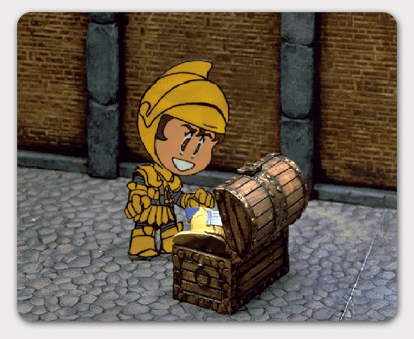
Gilgamesh discovers the Jet Boots that will
increase his movement speed in a recreation
of a scene on a Japanese Arcade photographic pamphlet for the original
Tower of Druaga.
Gilgamesh is a two-dimensional animation cut-out, while the remaining
surroundings are
hand-crafted scale models of the inner corridors of the tower.
Traditionally, each Druaga
game opens up with the slightly ambiguous sentence:
In Another Time...
In Another World...
Which, upon considering the
original source material for the franchise, is a fairly apt statement.
The "Druaga" series borrows quite a bit of mythology, theology and
historical fact as source material. The "another time and world" setting
mentioned more than likely implies that very fact. The Druaga universe
seemingly runs parallel to ancient Assyro-Babylonian, and ancient
Sumerian myth.
|
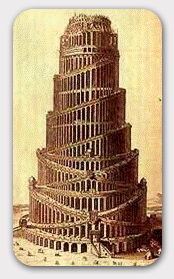
"The Tower of Babel" as envisioned by
Athanasius Kircher.
|
Consider first the Tower of Druaga itself.
The tower itself seems to be based quite a bit off of the ancient Tower
of Babel. In which the Tower of Babel was constructed in an
effort to reach Heaven. According to the account, Humankind once
had a uniform language, but after God saw the construction of
the tower as an act of outright defiance, he afflicted mankind
with a confusion of tongues. Mankind could no longer communicate
with one another due to the fact that the once uniform language
was no longer uniform, and as a result, spread out across the
earth. (Genesis 11:1 - 9)
It is by this that many people believe that this occurrence was how the
many varying languages of the world were born.
It is not mentioned that God directly destroyed the tower. However it is
strongly implied that due to the act of God causing the
confusion of tongues, the Tower of Babel never saw completion
because construction plans could no longer be carried out with
so many different languages. Eventually this lead to the Tower
falling into ruination and disrepair.
In the story of the Tower of Druaga, the creators at NAMCO took an
interesting "twist" on the account. |
Bear in mind that the Druaga
series has an ongoing tradition in which all of the games involve you
returning to the Tower itself at some point in time. From The Quest
of Ki until The Blue Crystal Rod, the series of events would
come to be known as "The Druaga War" (A synopsis of the entire
events spanning The Druaga War has been made available in the
Prologue of The Blue Crystal Rod, both in this game and this
article).
|
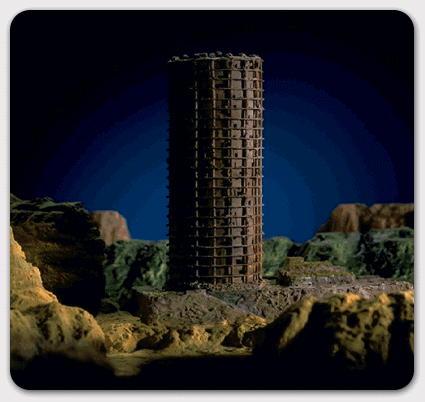
Original promotional photograph of a
pamphlet advertisement for the Japanese Arcade release of The
Tower of Druaga (1984). A scale model of backdrops and
locations, accompanied by two-dimensional hand-drawn animation
cells were used in the photography of the pamphlet.
|
Here's where the similarities
between the Towers of Druaga and Babel lie.
The entire saga of Druaga takes place in the fictional nation of
"Babilym" 「バビリム」 which was more than
likely named after the ancient city of "Babylon".
In the story of the game, Babilym rests along the Euphrates River.
Further along down the river is the Empire of the neighboring
nation, Sumer 「スーマール」. Based on the
real-life nation of the same name.
The chief god Anu [of Sumerian, Babylonian and Assyrian mythology]
created the legendary Blue Crystal Rod, which rests on a
pedestal in heaven and shines a light that radiates down upon
the city of Babilym--bringing peace and prosperity to its
people.
The Sumerians and their Emperor eventually hear of the Rod's existence
and clad themselves in armor, preparing for an invasion on
Babilym.
The invasion is carried out and Babilym is now occupied by the Sumerian
Army. The Sumerians enslave the people of Babilym and force
them to build the tower in an effort to reach the very heavens. |
The Tower's construction had been just completed. As it turns
out however, the tower was so incredibly high [spanning a
whopping 60 floors which was incredible for such an RPG at the
time--especially an Arcade RPG. A genre that was barely
explored.] that the Tower overshadowed the Celestial light that
poured down over Babilym. The city had lost its divine
protection entirely.
This gave way to the resurrection of the demon Druaga, who had once been
sealed away by the goddess Ishtar. Druaga stormed the freshly
completed tower, went to the top floor, got the Blue Crystal
Rod, released all of his monsters and minions under his control
and took up residency within the tower.
On a side note--A once common thought was that God directly
destroyed the Tower of Babel. In the "Druaga" series, that
thought is actually realized.
For you see, Anu looked down from heaven and saw all the chaos that had
ensued and came to the conclusion that all humans in general
were not worthy of divine salvation. As a result, Anu struck the
newly dubbed "Tower of Druaga" with a forceful lightning bolt!
Causing the tower to crumble into ruination. |
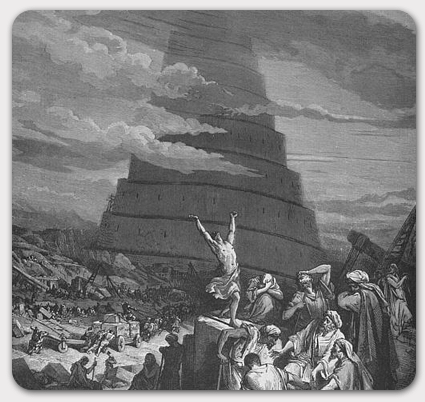
An engraving known as "The
Confusion of Tongues" by
Gustave Doré (1865). Depicting the construction of the Tower
of Babel, which was built in an effort to reach heaven, but was
ultimately struck down by God. |
Both towers were constructed in an
effort to reach heaven, and both were devastated be it directly, or
indirectly by the hand of God. It is there where the similarities
between the two towers ends, however. Continuing on. The destruction of
the tower killed nearly all of the Sumerian Army. The people of Babilym
breathed a sigh of relief, for their oppressors had been done away with.
Everyone had slept easily that evening... until.
Druaga appeared again, wielding the Blue Crystal Rod that he had spirited
away from the heavens. He used the Rod's restorative powers to
reconstruct the tower to its former glory overnight. Additionally, he
restored all the evil creatures that were present within the tower prior
to its destruction. Monster, fiend, and soldier alike. Druaga's minions
were restored, and the once proud Sumerian soldiers were now under
Druaga's reign.
Even Quox the Dragon, both good-natured, and the former resident of the
tower found himself struggling against Druaga's evil control.
As a last ditch effort, Ishtar, the Goddess of Love and War appealed to
Anu to let him make the people of Babilym her responsibility. In an act
of compassion towards mankind, Ishtar employed her Shrine Maiden Ki in
an effort to single-handedly invade the Tower of Druaga and steal back
the Blue Crystal Rod. Ishtar even gave Ki her blessing in the form of a
golden tiara with a red jewel embedded in the front as a form of
protection. Ki was also commanded not to engage in physical combat
without the Blue Crystal Rod, for it was a sin for her to do as such.
In her ascent up the tower, Ki befriended Quox the Dragon who helped her
towards the top. In finally reaching the pedestal where the Blue Crystal
Rod rested, the Rod mysteriously separated into three individual rods of
Red, Green, and Blue. Being somehow linked to the Blue Crystal Rod, Quox
the Dragon was finally subdued when this happened. He was changed from
good to evil and split into three forms. A Green, Silver, and Black
dragon. Druaga then appeared, looming over Ki and creeping out of the
shadows. Druaga turned Ki into stone... All that remained of her was a
simple gray-colored rock with a familiar golden tiara around it.
Druaga then sent a hooded messenger to tell Gilgamesh of the news.
Gilgamesh then was given blessed golden armor by Ishtar, and quickly
resolved to storm the Tower of Druaga...
And that's where our
story continues...
Cast of Mainstay Characters:
Click Pictures for
enlarged views.
|
|
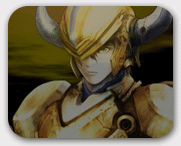 |
Gilgamesh (Gil) ギルガメス(ギル):
Gilgamesh is the main hero of the Druaga series. Also commonly
referred to as "Gil, the Golden Knight". In the game, he is the
son of
King Marduk [whom in real life history is the god of ancient
Babylon]. Sadly, King Marduk was defeated in the invasion of the
Sumerian Empire. Gilgamesh is the Prince of Babilym, who would
eventually become King upon his wedding to his childhood friend
and lover, Ki, the Shrine Maiden of the Goddess Ishtar. Gil is
brave and noble in his duties--always striving to see them
through to the very end. Which is greatly in contrast to the
actual figure he was based off of. The real Gilgamesh of
historic legend was said to be a "Demigod" [akin to Hercules]
and was reportedly "two thirds god and one third man".
Much like his video game counterpart, he was of royal lineage--the fifth
king of Uruk. Although he wasn't anywhere near "noble". He would
"sleep with women the night before their weddings to their
respective husbands". Even in the great
Epic of Gilgamesh that was recorded on stone tablets
over some 4,000 years ago, Gilgamesh would embark on a journey
to achieve immortality--meeting Ishtar, the Goddess of Love and
War, and the "courtesan" [high-class "lady of the evening"] of
the Gods, and refusing her amorous advances upon him. Then
ultimately meeting the only survivors of "the great deluge"
[believed to be a strong reference to the flood of Noah's Ark].
Since then, the concept of Gilgamesh as a historical icon has been
associated with immortality and a great lust for power, which is
evident in games such as the Final Fantasy series, and
certain Japanese Anime series.
Even so, Gilgamesh and Ki remain notable characters among NAMCO's popular
video game character roster. They were even mascots of NAMCO,
along with Pac-Man, Taizou Hori (The star of Dig-Dug),
Mappy the Police-mouse, Valkyrie and Kurino Sandra, The Cosmo
Gang and more. All of which who frequently appeared on the
covers of NAMCO's long since discontinued Arcade newsletter
publication NG Gaming Community Magazine. The covers are
featured throughout the Sony PlayStation collection of
Namco Museum.
|
|
|
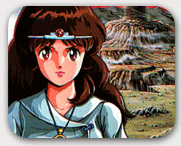 |
Ki カイ:
Ki [pronounced "KAI" and not "KEE" as some people
might think] is Gilgamesh's long-time childhood friend, and
beloved fiancée. She is a devout shrine maiden to the Goddess
Ishtar, whose job is to act as a mediator on behalf of the gods.
In the game, when Gilgamesh is critically wounded, it is Ki that tends to
him--ever watchfully. She is pulled away from her duties when
Ishtar commands her to sneak into the Tower of Druaga and steal
back the Blue Crystal Rod--a pivotal artifact that is extremely
vital to the events that are occurring; it can shift the outcome
of the Druaga War.
Ki fails in this attempt and is caught and transformed into a stone by
Druaga and held hostage.
Upon her rescue by Gilgamesh, it is now Ki's duty to lead the way and
help both Gilgamesh and herself escape from the rubble that once
was the Tower of Druaga. Now that she wields the Blue Crystal
Rod, Ki's magical prowess has greatly increased.
It is unclear, but I believe that Ki's source material is more than
likely based off the Sumerian Goddess of the Earth and
Underworld also known as the
Goddess named Ki.
In the game series, Gil and Ki would eventually become the next King and
Queen of Babilym. Ki makes a later appearance in the
Japanese-only Multiplayer Linked Arcade RPG Druaga Online:
The Story of Aon under the name of "Young Ki".
There is a reason behind this.
According to the game's story. Only Young Maidens of Babilym are to serve
as shrine maidens to Ishtar. This is due to the fact that only
young maidens possess the ability to hear the voices of the
gods. When Ki reached adult womanhood and became the wife of
Gilgamesh, she then lost her ability to serve as Ishtar's shrine
maiden. As a result, a new shrine maiden was to be named.
In NG Gaming Community Magazine, NAMCO of Japan's discontinued
Arcade newsletter, Ki has made the most appearances on the cover
artwork of any female character, and probably any NAMCO
character at that time, period.
|
|
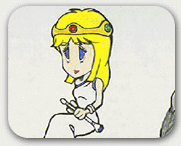 |
Ishtar イシター:
Both in the games and in real life history, Ishtar is referred
to as the Goddess of Love and War. Known for her stunning
beauty, in real life history she was also known as the
"courtesan of the gods".
After Anu grew disgusted at the sight of human beings fighting over the
Blue Crystal Rod, Ishtar appealed to Anu, asking that she could
take up the role of watching over the humans of Babilym.
Ishtar worked with Gil and Ki in an effort to recover the Blue Crystal
Rod that had been stolen by her archenemy Druaga.
Throughout the games, Ishtar serves as a guide to help players succeed in
their many quests. This even holds true in Namco X Capcom
for Sony PlayStation 2 as she helps the characters there travel
between dimensions. In that game, Valkyrie (from the "Valkyrie"
series) was her personal agent.
Even so, when Ishtar made an appearance in The Nightmare of Druaga:
Mysterious Dungeon, she was actually quite bossy and
demanding towards Gilgamesh. The scriptwriters probably wrote
her out to behave this way, as the game was extremely strict
about employing anti-cheating measures.
Should a player die in a dungeon, become frustrated and turn off the
PlayStation 2 console, or try to back up their save by swapping
Memory Cards and saving to another card should you fail on one
save, the player would be greeted by the Goddess Ishtar the next
time they started the game.
Ishtar would give the player a strong, firm lecturing about how they
"should not mess with the natural flow of time" and that they
"mustn't do it again, or else there would be dire consequences
to pay" [referring to messing with save files on your memory
card].
This behavior was very contrary to Ishtar's normal, compassionate,
loving, almost "motherly" behavior in previous games. But The
Nightmare of Druaga: Mysterious Dungeon was developed by
ARIKA and ChunSoft, and was merely licensed by NAMCO.
So whether or not the game can be considered "canon" can be
disputed [especially since the "Druaga" series was supposed to
have ended in 1994's Super Famicom title "The Blue Crystal
Rod" ].
|
|
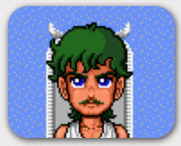 |
Anu
アヌ:
Anu, the chief "God of the Pantheon". And a prominent god in
Sumerian, Babylonian, and Assyrian mythology. The original
creator of the Blue Crystal Rod itself.
Anu created the Blue Crystal Rod so that it's celestial light could shine
down on Babilym and its people--a reward for the strong show of
faith and servitude towards him.
After seeing the Sumerian Imperial Army ravage Babilym and build the
Tower to reach the Blue Crystal Rod in heaven, Anu grows
disgusted with humankind in general and turns his back upon
them. After the Rod was stolen, Anu becomes enraged even further
and destroys the tower via a mighty strike by a lighting bolt,
even destroying all who resided within it.
Ishtar appeals to Anu, and Anu gives the humans one final chance to set
things right.
While he is important to the story, because he created the Blue Crystal
Rod, Anu makes little appearances throughout the series.
However, Gilgamesh has the option to face him in the 5th and
Extra dungeon of The Nightmare of Druaga: Mysterious
Dungeon in a stage known as "Between Heaven and Earth".
|
|
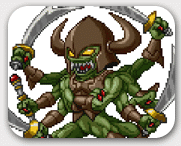 |
Druaga ドルアーガ:
In Babylonian mythology,
Druaga was the ruler of the devil world. The representation
of him in the game series stays true [for the most part, anyway]
to how his true form is said to look. The Ruby mace, eight arms,
four legs and such.
In the game, Druaga had been previously defeated by the Goddess Ishtar
and was sealed away under the earth below. The celestial light
that poured upon the land of Babilym from the Blue Crystal Rod
insured that he remained sealed away.
But when the Sumerian Empire invaded Babilym and greedily built a tower
to reach the Blue Crystal Rod, the celestial light that kept
Druaga sealed was obscured by the tower's dark shadow. Thus,
Druaga broke free and took the Blue Crystal Rod and control of
the tower for himself.
While Druaga died by Gilgamesh's hand in The Tower of Druaga, Gil
and Ki worked hard to prevent his resurrection and defeat him
once and for all in both The Blue Crystal Rod and The
Nightmare of Druaga: Mysterious Dungeon.
|
|
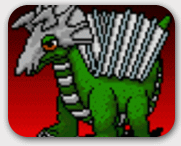 |
Quox The Dragon クオックス・ザ・ドラゴン:
Quox the Dragon is one of the
few characters that has nothing to do with Sumerian, Babylonian,
or Assyrian mythology. The concept of "Quox the Dragon" first
appeared in the year 1914 in the eighth book of L. Frank
Baum's "Oz" book series of children's novels--the book
titled "Tik-Tok of Oz".
Described as a "lackadaisical" [to be without vigor or determination;
listless. or "lazy" and sloth-like for all intents and purposes]
dragon in the book, he aided in the defeat of the Nome King.
In the games however, Quox is said to have been the original inhabitant
of the tower before the "Druaga" incident occurred. He was quite
docile and friendly, and even was befriended by Ki and helped
her in her efforts to reach the top of the tower.
Said to be the physical
manifestation, or rather, the "embodiment" of the Blue Crystal
Rod itself. Quox is physically linked to the Blue Crystal Rod.
Initially, Quox resisted Druaga up until Ki finally had the Blue Crystal
Rod within reach. When the Blue Crystal Rod split into three
forms--the Blue, Green, and Red Crystal Rods--Quox became evil
and under Druaga's control. Ultimately splitting into three
separate forms. His original form of a Green dragon, then a
Silver Dragon, and then a Black Dragon.
After Druaga's defeat, Quox regained his sanity and was good once again.
|
|
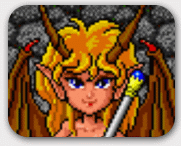 |
Succubus サキュバス:
Succubus was a seductress and
an agent of Druaga.
During the Tower of Druaga incident, Gilgamesh came into contact
with her. At that time, Gil had acquired the Red and Green
crystal rods. All he needed was the Blue Crystal Rod to make the
rod whole once more.
Using trickery and deception, Succubus attempted to deceive Gilgamesh and
end his quest prematurely. Gilgamesh bested her however, and she
eventually relinquished the Blue Crystal Rod--allowing Gil to
fight against Druaga on the 59th Floor of the tower.
|
|
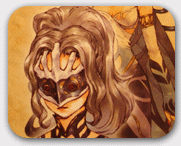 |
Skulld スカールド:
A mysterious female figure.
Her true identity remained shrouded in mystery. She did not appear until
The Nightmare of Druaga: Mysterious Dungeon for
Sony PlayStation 2.
During the events of that game, she kidnaps Ki and leads her to the Dark
Ruins. To which point, Gilgamesh gives chase.
There is some sort of link between her, Ki, and Succubus... What could it
be...?
|
Reoccurring Monsters
throughout the "Druaga" Game Series:
|
|
 |
Green Slime:
The most basic enemy of any RPG.
Green slimes are the first enemy that Gilgamesh will encounter in the
tower of Druaga. The player soon learns that nearly all enemies
in the tower of Druaga come in tiers and ranking systems.
The Slime family is closely related to its cousin, the Ooze
family. The Ooze family is not listed here. They resemble
slimes, but are much lower to the ground--like puddles of
liquid.
|
|
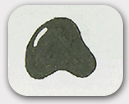 |
Black Slime:
Black slimes are like Green slimes with the exception to the fact that
they are slightly stronger than their Green counterparts.
They can still be easily dealt with however.
|
|
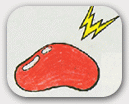 |
Red Slime:
Red Slimes can cast magic spells.
Adding an interesting change of pace to the slime family. The spells can
be deflected with Gilgamesh's shield, however.
|
|
 |
Blue Slime:
Blue Slimes are like Sorcerers. They can be taken advantage of by the
fact that they can break through walls in the tower.
If taken advantage of properly, the player can easily reach the door, key
or treasure chests.
|
|
 |
Yellow Slime:
Yellow Slimes pose a bigger threat because they can shoot fireballs that
will linger on the floor for a short while.
Fireballs will cause anyone that walks into them to perish.
|
|
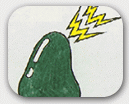 |
Dark Green Slime:
The strongest of the slime class.
They can shoot magic that can pass through walls. It would be especially
wise to be wary of these monsters.
|
|
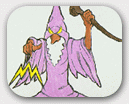 |
Mage:
Mages, like all of the Mage family have a habit of casting a spell
and randomly teleporting to another spot across the map.
Magic can kill the player on the spot if it's not blocked with a shield
or avoided.
|
|
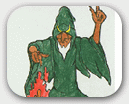 |
Druid:
Druids are a bigger nuisance, because like the Yellow Slime, they too can
shoot fireballs that will linger on the floor and will cause the
player to die if walked into carelessly.
|
|
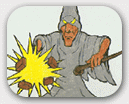 |
Sorcerer:
Sorcerers have the ability to simply cast spells that can destroy walls.
They can either be your best friend or worst enemy if not treated with
care. Take advantage of them as you see fit.
|
|
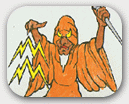 |
Wizard:
Similar to the Dark Green Slime, Wizards are the highest tier of the mage
family and pose the biggest threat.
Dark Green Slimes can cast penetrating magic, but have limited movement
because of the walls of the room. Wizards can overcome this
obstacle however by simply teleporting around the room.
|
|
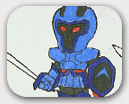 |
Blue Knight:
The Knight family.
The first tier is the Blue Knight. Equal to the Green Slime, they have
slow movement speed and the lowest vitality.
|
|
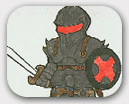 |
Black Knight:
Corresponding with the Black Slime, Black Knights are a little stronger
than Blue Knights.
They're also somewhat tougher to kill and should be treated with care.
|
|
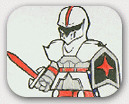 |
Mirror Knight:
The majority of the Knight Family is completely impervious to Ki's magic.
As the tiers of Knights increase, the stronger and faster Knights become.
|
|
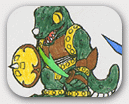 |
Lizardman:
Lizardmen are another mainstay of traditional role playing games.
While they are exceptionally strong and quick in The Tower of Druaga,
in the game The Nightmare of Druaga: Mysterious Dungeon,
they retain the ability to bust down walls!
|
|
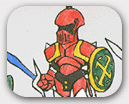 |
Red Knight:
Very quick, high attack power, and movement speed.
The Red Knights are only second best to the Hyper Knights.
|
|
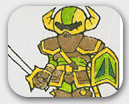 |
Hyper / High-Power Knight:
Hyper Knights.
The strongest of all knights. Only fight them if it is absolutely
necessary to get by. Otherwise, avoid these guys at all costs.
|
|
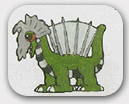 |
Quox The Dragon:
Quox the Dragon was once docile, but went mad after the Blue Crystal Rod
split into three forms.
The Green dragon form of Quox is the weakest form, but is still
exceptionally strong.
Quox can also blast a steady stream of fire that can scorch Gilgamesh, or
any other adventurers severely.
|
|
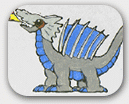 |
Silver Dragon:
The second-strongest form of Quox. This beast can only be subdued when
Gilgamesh [or anyone else] obtains a certain mace on one of the
floors of the tower.
|
|
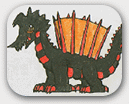 |
Black Dragon:
The strongest and fastest form of Quox.
The most aggressive of all. Like the other dragons, it can only be
subdued when the player has obtained a certain mace.
|
|
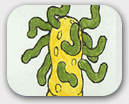 |
Green Roper:
Ropers are extremely annoying throughout the entire Druaga series.
Because they have several tentacles, they have an exceptionally high
attack and defense power. Don't bother trying to kill these
monsters. In all Druaga games, they will often kill you first
before you even have a chance at killing them.
To make matters worse, these creatures also come in tiers as well.
|
|
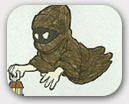 |
Ghost:
Ghosts essentially are undead mages that have the ability to freely pass
through walls. They also have their own family and come in
tiers. To make matters worse, they to can cast the same array of
spells as the Mage family.
Additionally, Ghosts are normally invisible to the player until the
player receives a Candle--which will expose their presence.
|
|
 |
Red & Blue Will-o'-the-Wisps:
Don't dawdle for too long on the floors of the tower. Red and Blue Wisps
will spawn if the player remains on a floor for too long. They
can kill the player on contact.
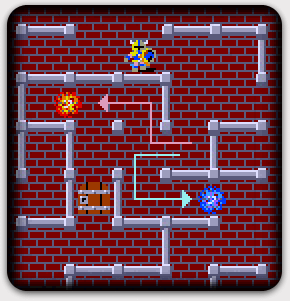
They move in a set pattern, however.
Red wisps will follow the wall in a
counter-clockwise pattern, while Blue wisps will follow in a
clockwise pattern. Gilgamesh can become impervious to their
touch by obtaining the Red and Blue rings, however.
|
|
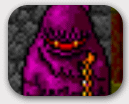 |
Vampire:
Vampires originally appeared on the very first area of The Return of
Ishtar. Even though they come in tiers, they are slow and
sloth-like.
The Purple Vampire is the lowest tier.
|
|
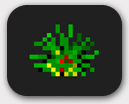 |
Land Urchin:
Much like the Roper family, they have very high attack and defensive
capabilities. In fact, I don't even think these things can be
killed at all. The only game where they can be killed is in
The Nightmare of Druaga: Mysterious Dungeon. I strongly
advise against engaging any of these in combat--nine times out
of ten, you'll most likely be killed.
These enemies should be avoided at all costs. They appear in The
Return of Ishtar and from there on out.
|
|
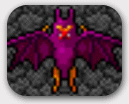 |
Babbit:
This species of bat didn't appear until The Return of Ishtar.
They can come in swarms and move exceptionally quickly. Additionally,
they also have a "family" and come in tiers. Purple being the
lowest tier.
|
|
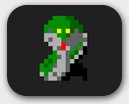 |
Snake:
Snakes did not make an appearance until The Return of Ishtar. They
possessed the ability to poison Gilgamesh and Ki on their
journey on the way out of the tower. After The Return of
Ishtar, snakes became a mainstream monster.
|
| |
Originally, the Druaga canon
was supposed to span the first four games listed below. But back by
popular demand, the series has continued onward. Without a doubt, the
very first game released, The Tower of Druaga remains the most
popular of the franchise to this day. The only other game that can even
remotely hold a candle to it is The Return of Ishtar. Even so,
the only time the two games have seen a stateside released were in the
"NAMCO Museum" collection on Sony PlayStation. By my count, the only
Druaga game to see an "intended" release outside of Japan was The
Nightmare of Druaga: Mysterious Dungeon.
The game list is as follows:
- カイの冒険
"The Quest of Ki"
NAMCO ®, 1988.

Nintendo Famicom [Japan]
- ドルアーガの塔
"The Tower of Druaga"
NAMCO ®, 1984 to Present Day.



Arcade, Nintendo Famicom, PC-Engine (TurboGraphx-16), MSX, FM-77, Sharp
X1, Sharp X68000, As a bonus disc obtained from pre-orders for the
Japanese version of
"Baten Kaitos" for Nintendo Gamecube. [Japan]
Arcade version ported to "NAMCO Museum Vol. 3" (©1997)
for Sony PlayStation (with "Darkness Dungeon" / "Another Dungeon"
modes added) [Japan, U.S.A., & Europe]
- イシターの復活
"The Return of Ishtar"
NAMCO ®, 1986 to Present Day.



Arcade, Sharp X68000 [Japan] "Namco Museum Vol. 4" (©1997), PlayStation [Japan, U.S.A.,
& Europe]
-
ザ・ブルー・クリスタル・ロッド "The Blue Crystal Rod"
NAMCO ®, 1994.

Nintendo Super Famicom [Japan]
-
ザ・ナイトメア・オブ・ドルアーガ:不思議のダンジョン "The Nightmare Of Druaga: Mysterious
Dungeon"
NAMCO ®, 2004.


Sony PlayStation 2 [Japan & U.S.A.]
-
攻めCOM(こみ)ダンジョン:ドルルルアーガ "Attacking COM Dungeon: Drururuaga"
NAMCO ®, 2000.

Nintendo GameBoy Color [Japan]
The articles will be presented in
the chronological format as shown above. Please enjoy. |
 |

